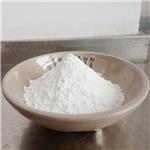Description
GLP-1 (7-37) is an endogenous truncated form of GLP-1 that arises from proglucagon processing in intestinal endocrine L cells, GLP-1 (7-37) acts as a GLP-1 receptor agonist and is an insulinotropic hormone that augments glucose induced insulin secretion. GLP-1 (7-37) and derivatives GLP-1 (9-37) and GLP-1 (28-37) can reduce plaque inflammation and increase phenotypic characteristics of plaque stability in a murine model of atherosclerosis.
Uses
Glucagon-Like Peptide 1 Fragment 7-37 human has been used:
- as a positive control for insulin secretion of pancreatic islets
- to test its effect on insulin response in horse islets
- in combination with mesenchymal stem cells (MSCs) test its protective effects in myocardial infarction
General Description
Glucagon-Like Peptide 1 Fragment 7-37 human (GLP-1-(7-37)) is an amino-truncated form of GLP-1.
Biochem/physiol Actions
Glucagon-Like Peptide 1 Fragment 7-37 human (GLP-1-(7-37)) interacts with the GLP-1 receptor (GLP-1r). It mediates insulin release by stimulating the cyclic AMP accumulation in islet cells GLP-l(7-37) is a potential therapeutic agent due to its insulin-secretagogue functionality.
in vitro
In vitro, truncated glucagon-like peptides [GLP-1(7-36)-amide and GLP-1(7-37)] increase insulin secretion in a glucose-dependent manner, and desensitization to the action of GLP-1(7-37) has been demonstrated acutely with high concentrations.
in vivo
GLP-1(7-37) (0.5, 5 or 50 pmol/min/kg) infused during the second hour of a 2-hour 11-mM hyperglycemic clamp produces a dose-related enhancement of the glucose-stimulated increase in plasma insulin concentration and an increased rate of glucose infusion in rats.
Infusion of GLP-1(7-37) (5 pmol/min/kg) from 1 hour through 7 hours produces a sustained increase in plasma insulin concentration relative to levels in rats infused with vehicle in rats with maintained glucose concentration at 11 mM.



